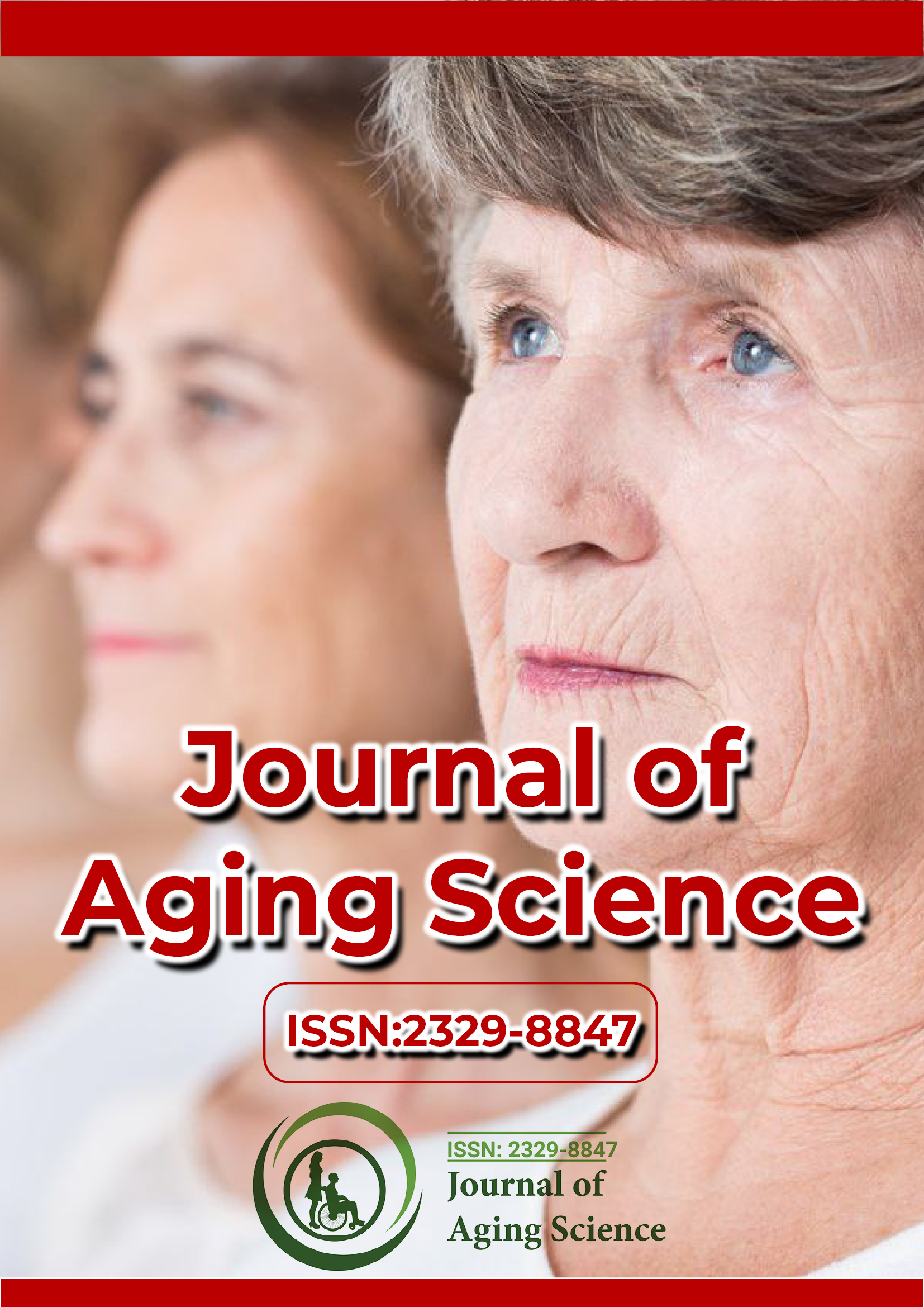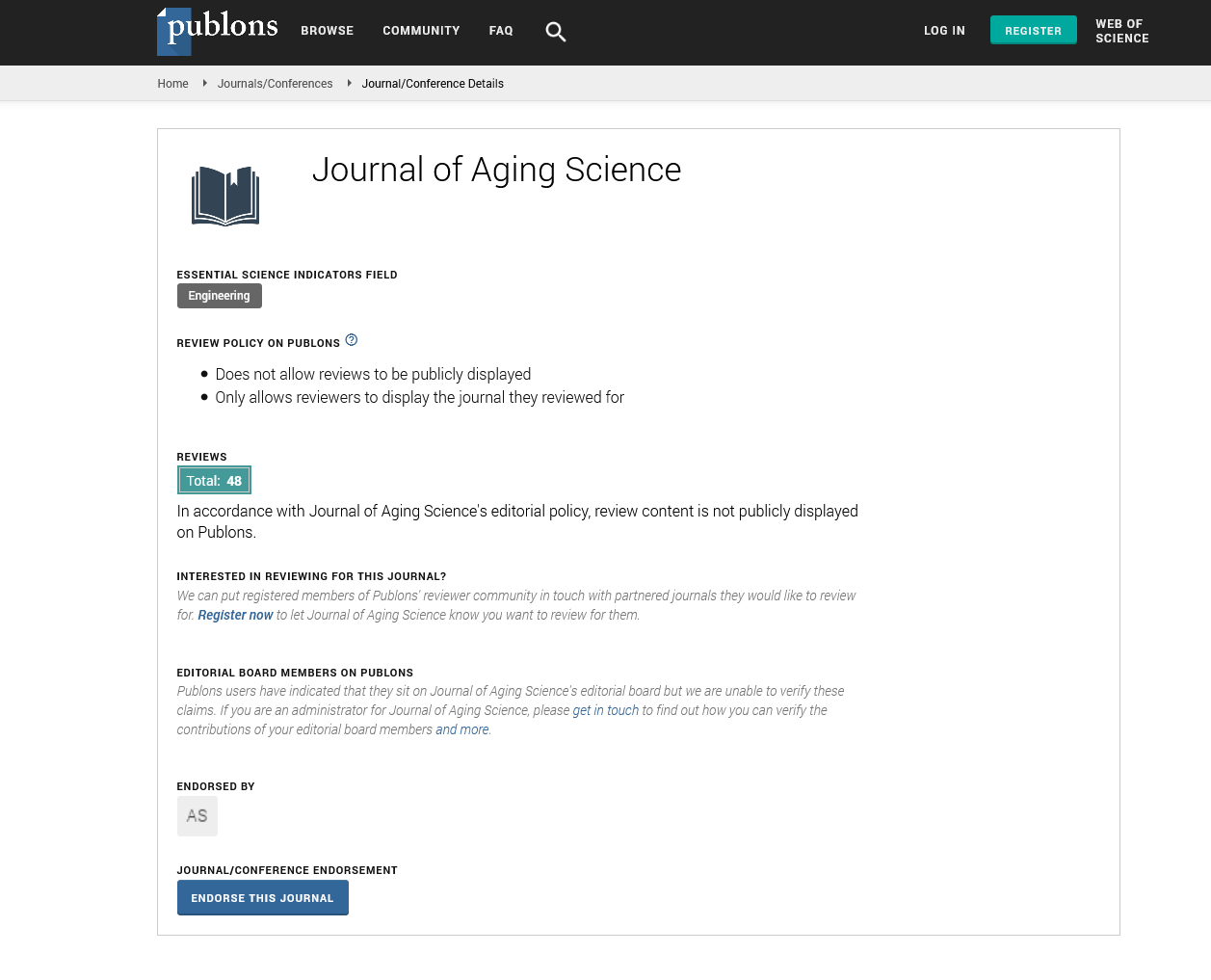Indexed In
- Open J Gate
- Academic Keys
- JournalTOCs
- ResearchBible
- RefSeek
- Hamdard University
- EBSCO A-Z
- OCLC- WorldCat
- Publons
- Geneva Foundation for Medical Education and Research
- Euro Pub
- Google Scholar
Useful Links
Share This Page
Journal Flyer

Open Access Journals
- Agri and Aquaculture
- Biochemistry
- Bioinformatics & Systems Biology
- Business & Management
- Chemistry
- Clinical Sciences
- Engineering
- Food & Nutrition
- General Science
- Genetics & Molecular Biology
- Immunology & Microbiology
- Medical Sciences
- Neuroscience & Psychology
- Nursing & Health Care
- Pharmaceutical Sciences
Opinion - (2025) Volume 13, Issue 1
Proteostasis and Its Impact on Aging and Neurodegeneration
Grace Joseph*Received: 27-Feb-2025, Manuscript No. JASC-25-28488; Editor assigned: 01-Mar-2025, Pre QC No. JASC-25-28488 (PQ); Reviewed: 07-Mar-2025, QC No. JASC-25-28488; Revised: 14-Mar-2025, Manuscript No. JASC-25-28488 (R); Published: 28-Mar-2025, DOI: 10.35248/2329-8847.25.13.400
Description
Proteostasis, or protein homeostasis, refers to the complex network of cellular mechanisms that regulate protein synthesis, folding, trafficking and degradation. This balance is critical for maintaining cellular function and preventing the accumulation of misfolded or aggregated proteins. However, as organisms age, proteostasis becomes progressively impaired, contributing to cellular dysfunction and increasing the risk of neurodegenerative diseases such as Alzheimer’s, Parkinson’s and Huntington’s diseases. Understanding the role of proteostasis in aging and neurodegeneration is necessary for developing therapeutic strategies to mitigate these conditions.
Mechanisms of proteostasis
Proteostasis is maintained through three primary systems:
Molecular chaperones: Chaperones such as Heat Shock Proteins (HSPs) assist in protein folding and prevent aggregation. They recognize misfolded proteins and facilitate their refolding or degradation.
Proteasomal degradation: The Ubiquitin-Proteasome System (UPS) selectively degrades damaged or misfolded proteins, ensuring cellular proteome integrity.
Autophagy-lysosomal pathway: Autophagy is a cellular degradation process that engulfs large protein aggregates and damaged organelles, breaking them down into their basic components for reuse.
Proteostasis and aging
Aging is associated with a decline in proteostasis, leading to increased protein misfolding and aggregation. Several factors contribute to this decline:
Reduced chaperone activity: The expression and function of molecular chaperones decrease with age, impairing protein folding capacity.
Diminished proteasome efficiency: The proteasome becomes less effective at degrading damaged proteins, resulting in their accumulation.
Autophagic dysfunction: Aging impairs autophagic processes, reducing the clearance of aggregated proteins and leading to cellular stress.
Oxidative and metabolic stress: Increased oxidative stress and metabolic imbalances contribute to protein damage and aggregation.
Impact on neurodegeneration
Neurodegenerative diseases are characterized by the accumulation of misfolded proteins, which form toxic aggregates that disrupt cellular function and lead to neuronal death. Impaired proteostasis plays a central role in these disorders:
Alzheimer’s Disease (AD): The accumulation of Amyloid-beta (Aβ) plaques and tau tangles is a hallmark of AD. Dysfunctional chaperones, proteasomal degradation and autophagy contribute to the persistence of these toxic proteins.
Parkinson’s Disease (PD): α-Synuclein aggregates, known as Lewy bodies, accumulate due to proteostasis failure. Impaired autophagy and UPS dysfunction exacerbate disease progression.
Huntington’s Disease (HD): Mutant huntingtin protein forms toxic aggregates that overwhelm cellular proteostasis mechanisms, leading to neuronal degeneration.
Amyotrophic Lateral Sclerosis (ALS): Misfolded Superoxide Dismutase 1 (SOD1) and other proteins contribute to motor neuron death, with proteostasis decline playing a significant role.
Strategies to restore proteostasis
Given the critical role of proteostasis in aging and neurodegeneration, several therapeutic approaches have been explored to enhance proteostasis networks:
Chaperone-based therapies: Small molecules that enhance chaperone function, such as heat shock protein inducers, can help refold misfolded proteins and reduce aggregation.
Proteasome activation: Compounds that enhance proteasome activity can improve protein degradation and reduce toxic accumulations.
Autophagy enhancement: Pharmacological activators of autophagy, such as rapamycin and caloric restriction mimetics, have shown potential in clearing protein aggregates.
Gene therapy and RNA-based interventions: Approaches that modulate proteostasis-related genes may help restore protein homeostasis in neurodegenerative diseases.
Conclusion
Proteostasis is fundamental for cellular health and its decline is a key contributor to aging and neurodegenerative diseases. The failure of molecular chaperones, proteasomal degradation and autophagy leads to the accumulation of toxic protein aggregates, accelerating neuronal dysfunction. Targeting proteostasis pathways offers potential therapeutic opportunities for agerelated neurodegenerative disorders. Ongoing research in this field may prepare for interventions that enhance proteostasis and promote healthy aging.
Citation: Joesph G (2025). Proteostasis and Its Impact on Aging and Neurodegeneration. J Aging Sci. 13:400.
Copyright: © 2025 Joesph G. This is an open-access article distributed under the terms of the Creative Commons Attribution License, which permits unrestricted use, distribution and reproduction in any medium, provided the original author and source are credited.

